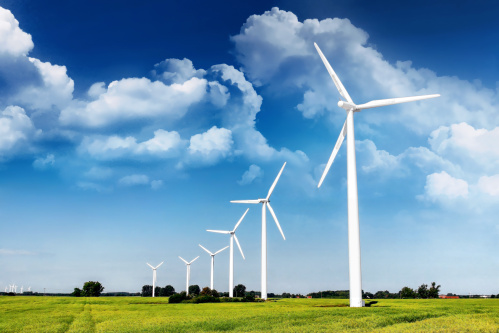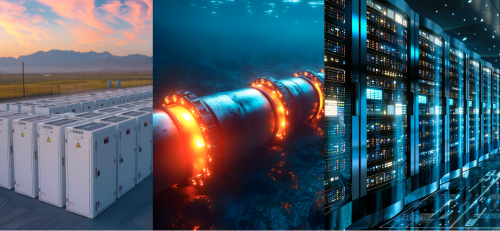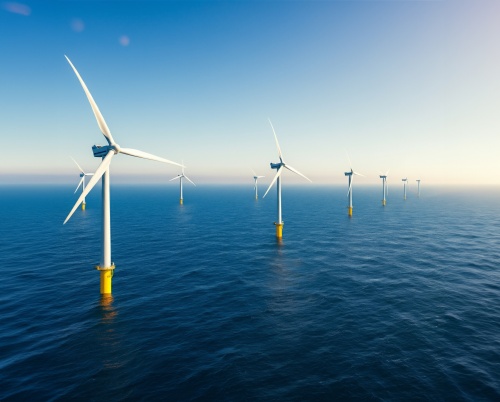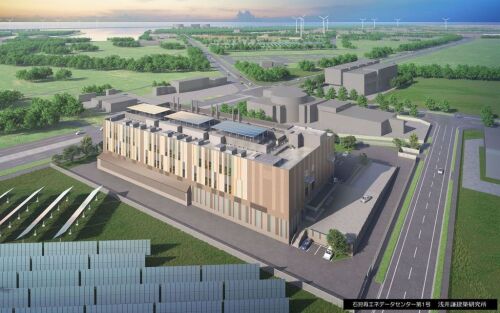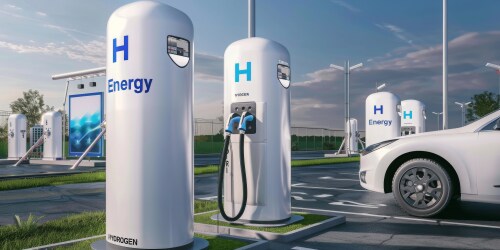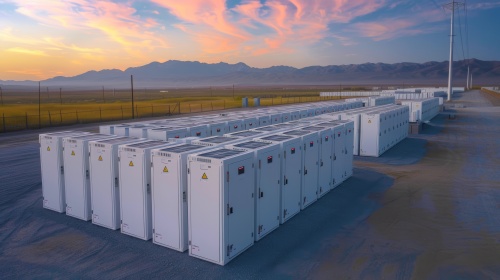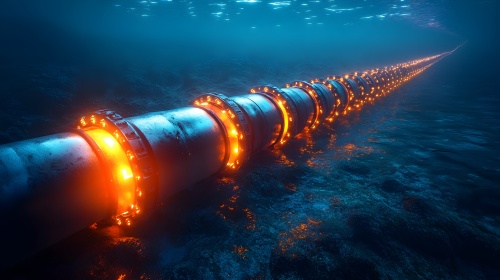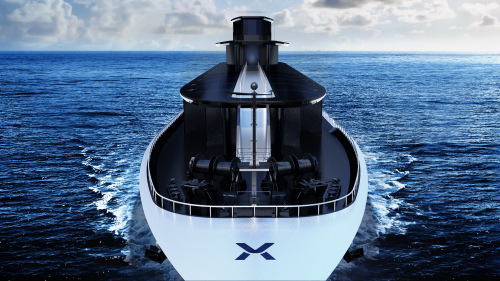Submarine DC power grid
The plan is to transmit renewable energy from Hokkaido to major consumption areas such as the Kanto region via submarine power cables. For the 2 million kW capacity of the Japan Sea route, efforts are underway to prepare for its completion by fiscal year 2030.
Transmitting Abundant Renewable Energy from Hokkaido to Major Consumption Areas
The development of submarine direct current (DC) power cables to transmit renewable energy from Hokkaido to major consumption areas such as Kanto is seen as a significant step toward utilizing Hokkaido’s renewable energy potential. It will contribute to stable power supply and the achievement of carbon neutrality goals.
Benefits of Submarine DC Power Transmission
- By introducing long-distance DC transmission technology, it is expected to enable the transmission of offshore wind power to demand areas, connect regions where interconnection via overhead transmission lines is difficult, and facilitate large-scale renewable energy integration, improve resilience, and promote wide-area electricity exchange.
Construction of a 2 million kW Submarine Power Transmission Line between Hokkaido and Honshu
The undersea DC power transmission linking Hokkaido and Honshu (Sea of Japan route, 2 million KW) is to be developed by 2030 according to the national government’s “Basic Policy for the Realization of GX”.
Inter-regional power grid reinforcement
- In order to take full advantage of the abundant offshore wind power potential, the transmission lines that send the generated electricity to large consumption areas will need to be expanded.
- The key to efficient long-distance power transmission is the introduction of ultra-high-voltage submarine DC transmission.
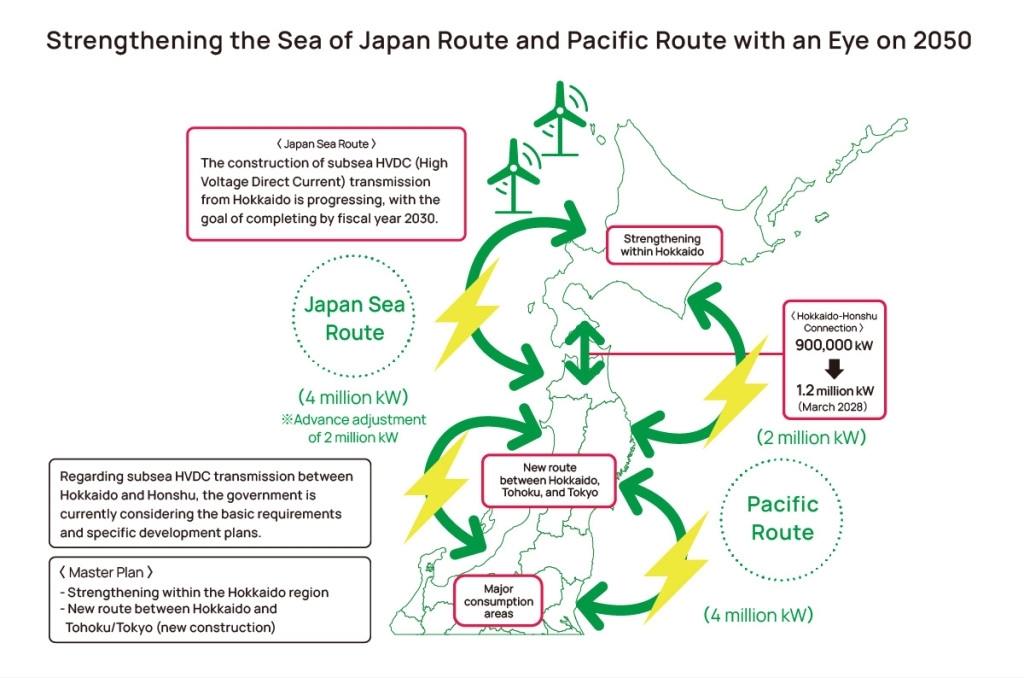
Source: Created based on “Toward GX and Decarbonization in Hokkaido” by Hokkaido.

